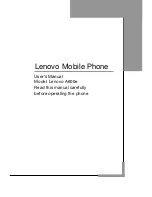
67
Making an emergency call
1 If the phone is not on, switch it on.
2 Press and hold
for several seconds to ready the
phone for calls.
3 Key in the emergency number for your present location
(e.g. 911 or other official emergency number). Emergency
numbers vary by location.
4 Press
Call
If certain features are in use (Keyguard, call restrictions, etc.), you
may first need to turn those features off before you can make an
emergency call. Consult this document and your local cellular service
provider.
When making an emergency call, remember to give all the necessary
information as accurately as possible. Remember that your wireless
phone may be the only means of communication at the scene of an
accident - do not cut off the call until given permission to do so.
Radio frequency (RF) signals
Your wireless handheld portable telephone is a low power radio
transmitter and receiver. When it is ON, it receives and also sends
out radio frequency (RF) signals.
In August, 1996, the Federal Communications Commission (FCC)
adopted RF exposure guidelines with safety levels for handheld
wireless phones. Those guidelines are consistent with safety standards
previously set by both U.S. and international standards bodies:
ANSI C95.1 (1992)*, NCRP Report 86 (1986)*, ICNIRP (1996)*.
Those standards were based on comprehensive and periodic
evaluations of the relevant scientific literature. For example, over
120 scientists, engineers, and physicians from universities,
government health agencies and industry reviewed the available
body of research to develop the ANSI Standard (C95.1).
The design of your phone complies with the FCC guidelines (and
those standards).
*American National Standards Institute, National Council on
Radiation Protection and Measurements; International Commission
on Non-Ionizing Radiation Protection.
Содержание 5180
Страница 1: ...OWNER S MANUAL ...
Страница 84: ...77 NOTES ...












































